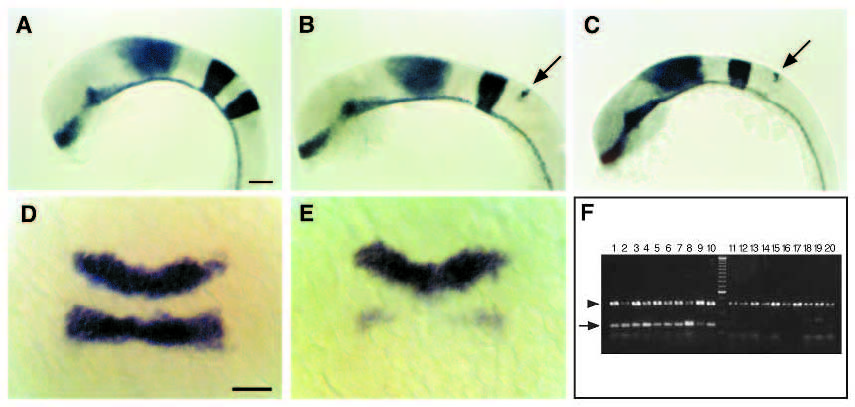Fig. 1 krox20 expression is disrupted in val- embryos early during hindbrain development. We screened 472 ENUmutagenized and 741 g- ray-mutagenized haploid genomes, and identified three alleles of valentino, one ENU-induced (valb337) and two g-rayinduced (valb361 and valb475). (A-C) Whole-mount RNA in situ hybridizations in lateral view showing expression of three genes, shh, en3 and krox20, in 18 h wild-type (A), valb337 (B) and valb361 (C) embryos. Anterior is to the left. In both alleles of valentino shown here, the r5 stripe of krox20 staining is reduced to a vestigial strip of expression in the dorsal hindbrain at the position of the r4-r5 boundary (arrow). (D,E) Dorsal views of whole-mount RNA in situs showing expression of krox20 in wild-type (D) and valb337 (E) embryos at the 2- to 3-somite stage (10J- 11 h). Anterior is to the top. In val- embryos, krox20 expression is already disrupted in the presumptive r5. (F) Following RNA in situ hybridization at the 2- to 3-somite stage, embryos from a cross between valb361/val+ individuals were sorted based on krox20 expression and then their genotype was determined by PCR using snail2, which is deleted in valb361 (see Materials and Methods). 10/10 individuals scored as wild-type were in fact wild type as determined by PCR (lanes 1-10) and 10/10 individuals scored as mutant were in fact mutant (lanes 11-20). Arrow: snail-2; arrowhead: nk2.2, an unlinked gene that is amplified from both wild-type and mutant DNA. Scale bars, 50 μm.
Image
Figure Caption
Figure Data
Acknowledgments
This image is the copyrighted work of the attributed author or publisher, and
ZFIN has permission only to display this image to its users.
Additional permissions should be obtained from the applicable author or publisher of the image.
Full text @ Development

